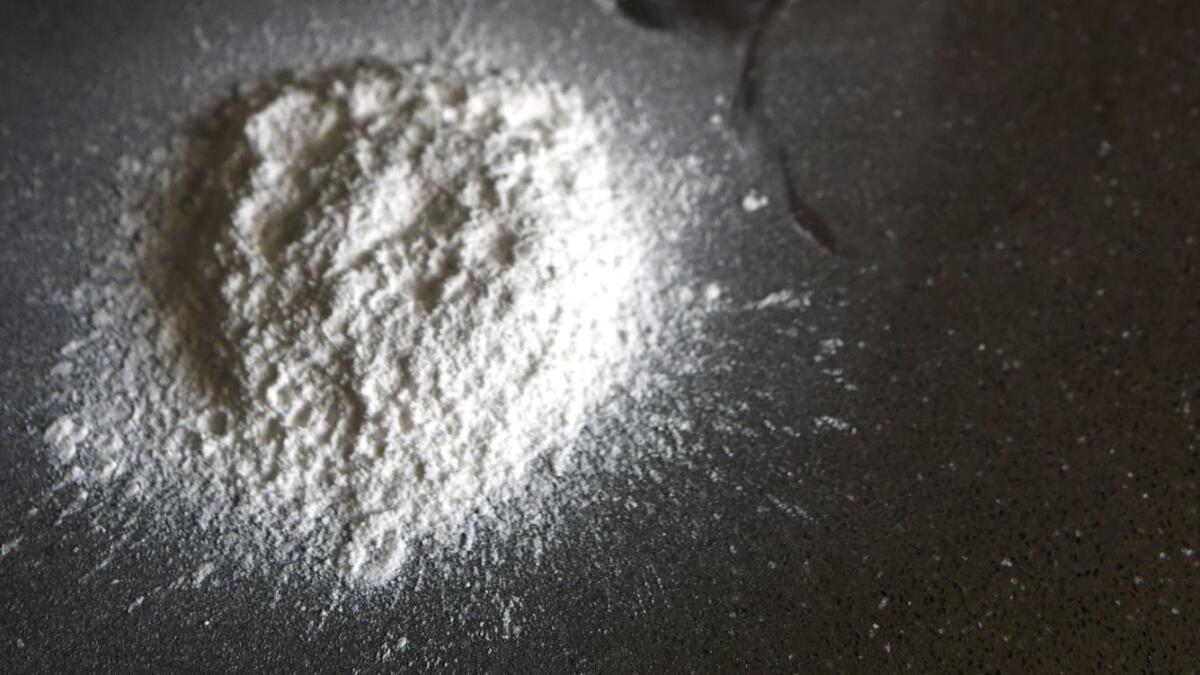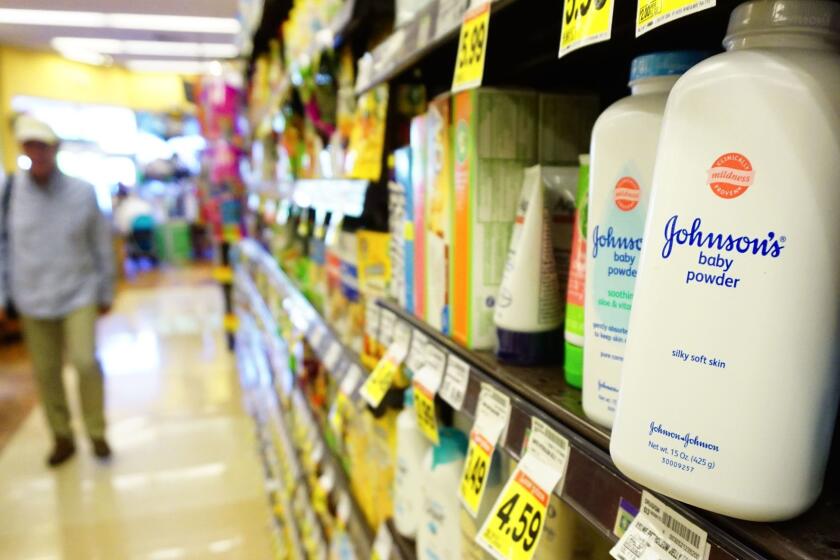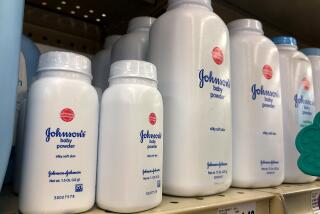Largest-ever analysis of baby powder and ovarian cancer finds no link between the two

- Share via
U.S. government-led research found no strong evidence linking baby powder with ovarian cancer in the largest analysis to look at the question.
The analysis involved 250,000 women who participated in four long-running studies and were asked periodically about their use of powder in the genital area. About 40% said they did.
During 11 years of follow-up, 2,168 women developed ovarian cancer. The risk was roughly similar for those who used powders and those who didn’t, researchers reported Tuesday in the Journal of the American Medical Assn.
“This represents the best data we have on the topic,” said the study’s lead author, Katie O’Brien, a senior scientist at the National Institute of Environmental Health Sciences.
The findings were called “overall reassuring” in an editorial published with the study. The study isn’t definitive, but more conclusive research probably isn’t feasible because a dwindling number of women use powder for personal hygiene, the editorial said.
Health concerns about talcum powders have prompted thousands of U.S. lawsuits by women who claim asbestos in the powder caused their cancer. Talc is a mineral similar in structure to asbestos, which is known to cause cancer, and they are sometimes obtained from the same mines. The cosmetics industry in 1976 agreed to make sure its talc products did not contain detectable amounts of asbestos.
A new study says talc doesn’t cause ovarian cancer
Smaller studies investigating a possible link between talcum powder and cancer have had conflicting results, though most found no connection.
These kinds of observational studies cannot determine cause and effect, and O’Brien said a more rigorous study wasn’t likely to be done. That would require randomly assigning a large group of women to use talc powders over many years, and comparing the results with those who didn’t use powders.
The researchers found hints of a potentially small increased risk for cancer among women who used talc powder and had never had a hysterectomy or fallopian-tube-tying surgery.
Susan Gapstur, senior vice president for behavioral and epidemiology research for the American Cancer Society, said that fits with one theory for how genital use of talc might be risky: With a pathway not blocked by surgery, powder particles could potentially travel into the fallopian tubes and ovaries and cause irritation, inflammation and DNA damage that could lead to cancer.
Those results were weak and are murky at best. Still, O’Brien said they made the overall findings “very ambiguous.”
The U.S. lawsuits have targeted leading baby powder maker Johnson & Johnson. Although several juries have reached multimillion-dollar verdicts against the company, they have been overturned or are being appealed. J&J says its powder is routinely tested to ensure there’s no asbestos.
Johnson & Johnson is an immense pharmaceutical and consumer products company of the type that the public loves to hate.
On Monday, an unusual mid-trial settlement was announced in an Oakland, Calif., case involving a woman who claimed asbestos in the powder caused her mesothelioma, a cancer that can affect the lungs and other organs. J&J spokeswoman Kimberly Montagnino declined to disclose terms or reasons for the agreement but said it “in no way changes our overall position that our talc is safe, is asbestos-free and does not cause cancer.”
J&J did recall a batch of baby powder in October after U.S. government testing found trace amounts of asbestos in a single bottle. The company paid for more testing by outside labs, which it said found no asbestos in the implicated baby powder bottle and other samples.
Last week, New Mexico sued the company, claiming it has marketed asbestos-containing baby powder and other talc powders for decades and has targeted black and Latino women and children with “false messages” about safety. J&J denies the claims.






